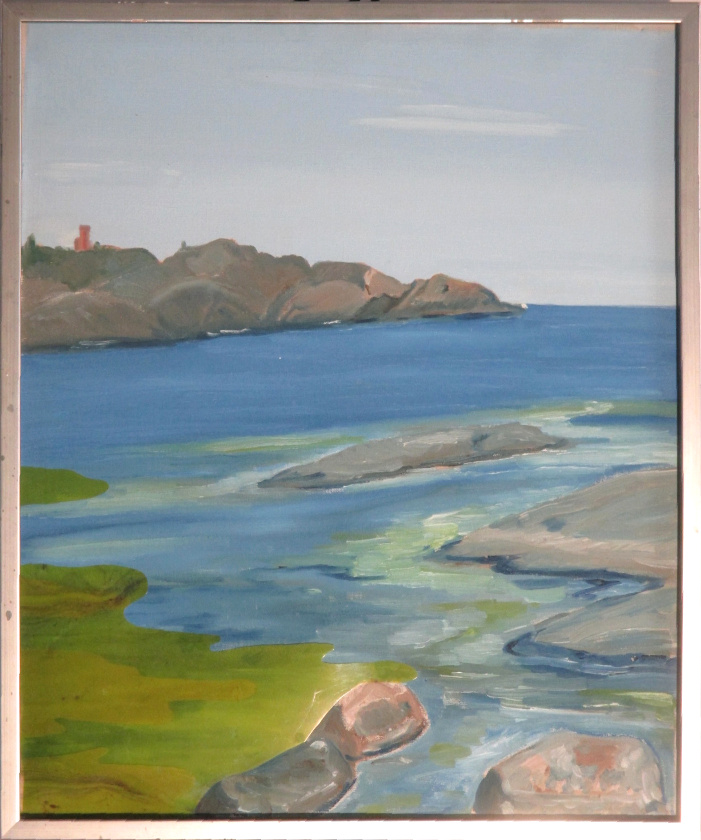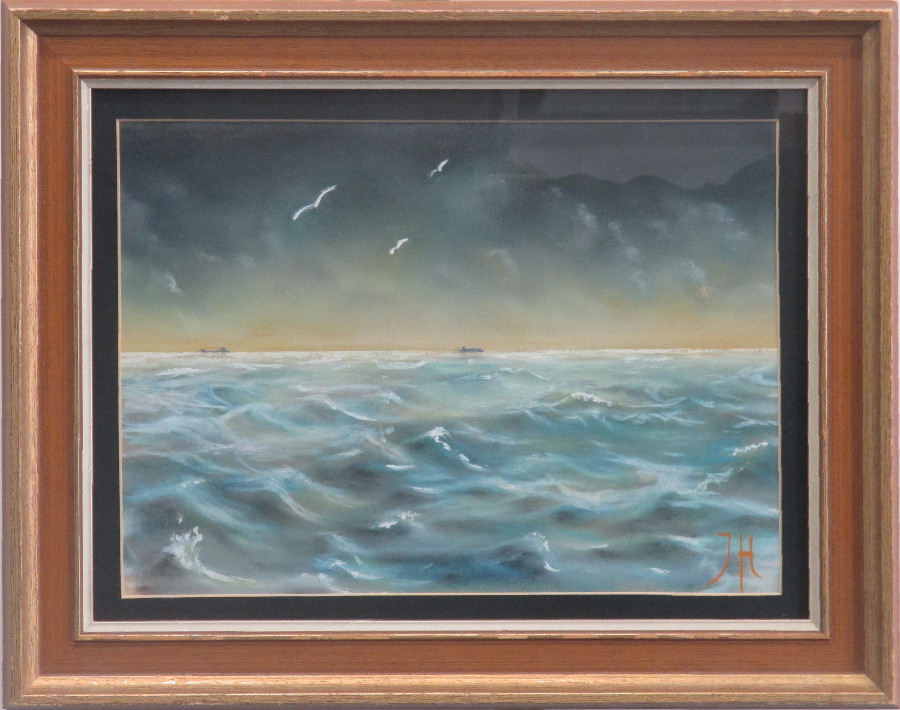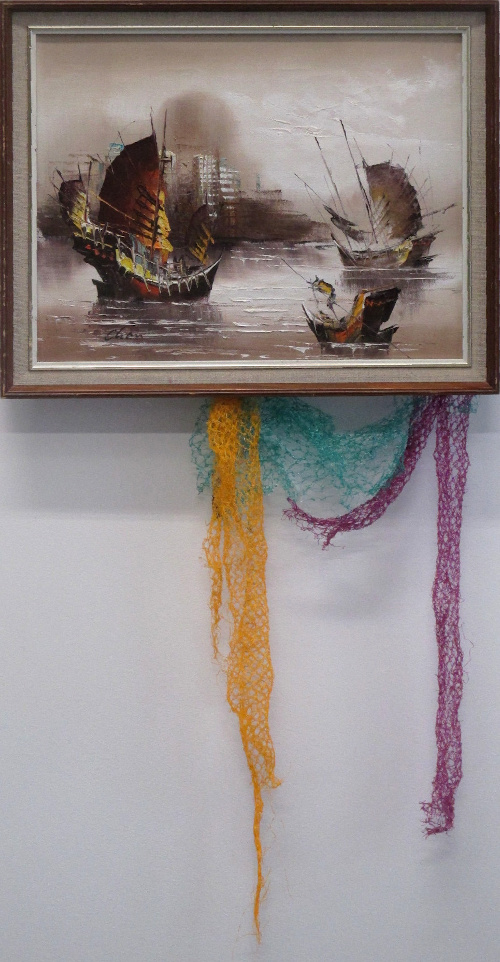I acquired abandoned maritime paintings.
I rescued them to reuse.
These abandoned paintings are the main material,
muse, subject and inspiration of my new works.
In their frames I attached remarks
of consequences of human actions.
I appropriated paintings as settings for current stories.
I continued their life cycle with respect.
I did it with no damage.
Facts collected mostly at Wikipedia.

Wastewater
print on film, abandoned painting (signature Liisa Räsänen 89)
Wastewater is caused by human activity.
It is water or other liquid with a harmful amount of foreign substances.
Wastewater can contain e.g. environmental toxins, drug residues and microbes polluting sea and beaches.
Wastewater can cause odor problems and the nutrients they are containing can cause eutrophication.

Algae Bloomprint on film, abandoned painting (unsigned)
Algae bloom is a rapid increase in the population of algae in water systems.
The cause of eutrophication is the nutrients entering to the waters as a result of human activity.
Eutrophication leads to e.g. occurrence of large algae blooms.
As a result decomposers are increasing, causing oxygen deprivation. Dead zones appear.
Once eutrophication has started, stopping it is problematic. Reducing the load won't help.
The anoxic state of the bottom can change the nutrients stored there into a soluble form,
allowing them to return to the cycle again.
People in Finland have not been seriously poisoned, although more than half of blue-green algaes are toxic
Swimming in water containing it can cause rashes, headaches and fever.

Plastic Wasteplastic chip, abandoned painting (signature M. Halmelehto -81)
the frame made of abandoned cardboard box for bananas
Of the approximately 90 million tons of plastic produced annually, approximately 10 percent ends up in the sea.
Most of it sinks to the bottom of the sea. And small part washes up on the coasts.
An estimated 1 million seabirds and 100,000 marine mammals and countless fishes die from plastic waste.
Plastic breaks down very poorly in nature.
Sun is able to break down plastic into small microplastics.
But those parts, invisible to the eye, remain in the nature or decompose very slowly.

Migrant Sea Crossingstire of toy car, pipe cleaner, abandoned painting (signature V. Puusa)
By sea, asylum seekers arrive in the EU mostly across the Mediterranean to Italy and Aegean Islands,
but also across Atlantic Ocean to the Canary Islands.
Sea travel involves great risks and people smuggling.
Accidents happen all the time. Many have drowned on the way.
In April 2015, the largest refugee shipwreck in history took place in the Mediterranean, where 800 people died.

Maritime Transport World Tradeacrylic on glass, abandoned pastel work (signature pastellimaalaus JH ? 10)
Maritime traffic causes waste and emissions.
In storms containers can fall from ships into the sea.
It is said, every year is lost 2,000 containers in European sea waters alone.
Shipwrecks can cause enormous environmental damage.
Maritime transport is mostly world trade.
Its liberalization is said to benefit above all large international companies and rich nations.

Ghost Netsplastic nets, abandoned painting (signature Chan)
Ghost net means lost or intentionally abandoned catch of fish.
Their history dates back to the 20th century, when more durable plastic superseded natural fibers on fishing gear.
As these degrade very slowly in the sea they continue to catch and cause deaths of
numerous fish, birds or other living things.
Ghost nets are particularly damaging to endangered animals and habitats.

Non-native Speciesplant pressed rugosa rose, leather of mink (Neovison vison), abandoned painting (signature SK : -30)
Non-native or alien species is one, which does not occur natively in the area.
It is moved there by humans either unintentionally or intentionally.
There are approximately 11,000 alien species in the EU, of which 10–15 percent are considered harmful.
Harmful alien species has a negative impact on either the native ecosystem or the human economy.
They can compete or interbreed with native species, eat them and spread diseases and parasites.
Often they also lack natural enemies.
It is estimated that 40 percent of animal extinctions are caused by alien species.
I thank Taike, FinnAgora and Valóság/todellisuus